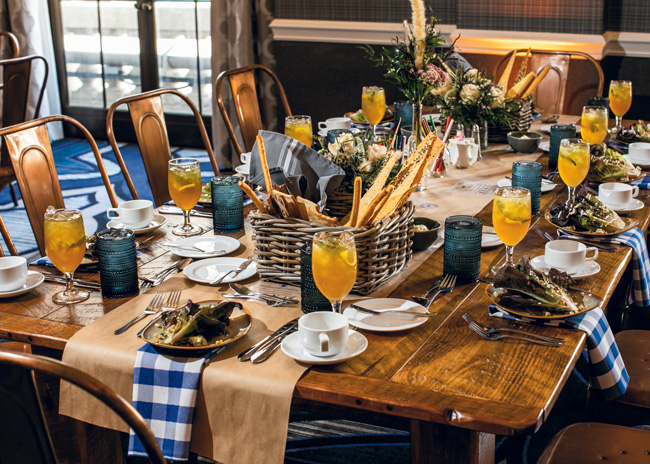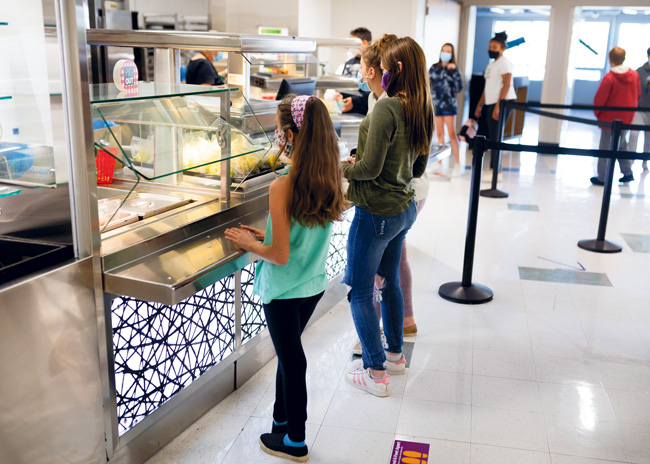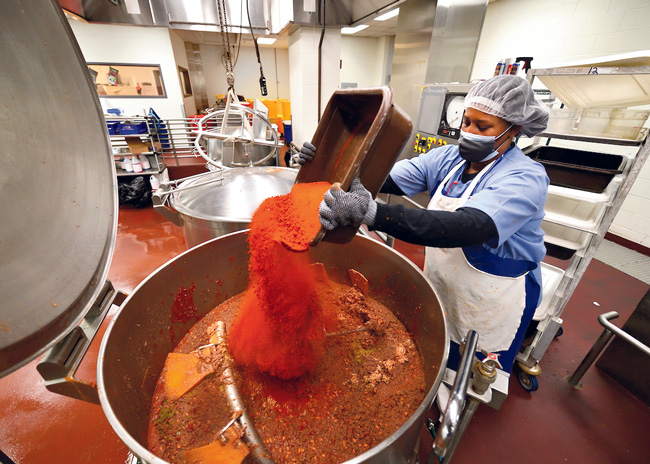“Grilled” is the top prep method called out on menus, according to Chicago-based Datassential’s “2021 MenuTrends” report. Grilled food not only appears on 78.5% of menus, but grilling also represents the most common prep method for limited-time offers at major chains.
Pent-up demand has consumers now looking for more upscale and/or unique experiences when hosting events.
From the constantly changing dietary needs and wants of diners to the sanitation scares courtesy of the pandemic, it’s not easy being a salad station these days.
Flexible design, a rethinking of service flow and multiuse equipment are all making headway in school foodservice programs.
“I’m from Virginia. We define barbecue as pork.”
Beth Wallace, the current president of the School Nutrition Association, and director of Food and Nutrition Services at Jefferson County School District in Lakewood, Colo., oversees 138 full-service kitchens for the district. The district serves an average of 10,000 breakfasts per day and 33,000 lunches.
Some may view a table in a restaurant simply as a place to enjoy a meal with clients, family and friends, with knives, forks and plates just serving a basic purpose.
As workers make their way back to offices, foodservice consultants in that space have been tasked to determine how to design and reconfigure serveries for what’s beginning to look like a hybrid remote/in-person setup.
Some states and municipalities around the country have announced that they are in the process of implementing or considering implementing bans on the use of natural gas in new building projects now and into the future. This will likely have a direct impact on kitchen design and equipment selection.
Supply chain issues have made repairing old equipment and purchasing new units harder than ever. Understandably, some operators must now consider purchasing new equipment from manufacturers that are new to them and, in some cases, they may have never even heard of these companies before. Often this equipment is far cheaper than the known factories.
Flexible design, a rethinking of service flow and multiuse equipment are all making headway in school foodservice programs.
Sometimes in life knowing what you don’t want to do can be just as important in shaping a career as having a clear vision for what path you might want to follow. Take, for example, Daniel Cornell, service manager for Coastline Cooling, a Florida-based company that services refrigeration, ice machines and other cold-side commercial foodservice equipment. Early on Cornell realized “sitting behind a desk was never my thing,” he recalls.
For college dining services, it’s a brave new post-pandemic world
Less expensive cuts of meat allow operators to adjust their menus to offset higher costs of goods.
Artisan meat and cheese popularity continues to soar as Americans’ hankering for charcuterie boards grows.
Juan Martinez, FCSI, principal and founder of Profitality Labor Guru, an industrial engineering consulting company, sees an advantage to applying industrial engineering-based principles to foodservice design.



















